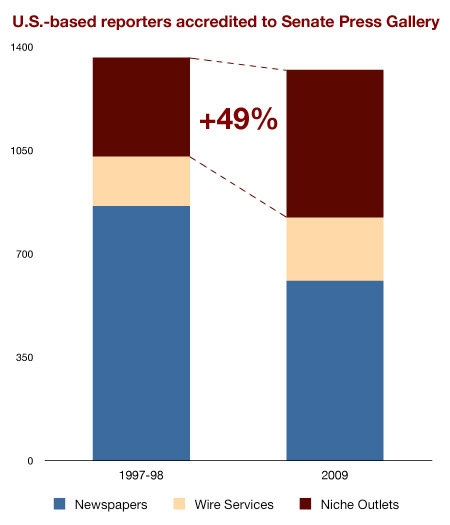
The next time someone tells you that the news industry’s financial crisis is hurting coverage of the federal government, point them to this chart. The Project for Excellence in Journalism has released new figures on the Capitol Hill press corps, and they show that Washington is still teeming with hacks. They’re just working for new types of organizations.
American newspaper reporters accredited to the Senate Press Gallery have declined 30 percent since the 1997-98 session, but the total number of U.S.-based reporters has remained steady (from 1,362 to 1,319). That’s because reporters from niche news outlets — think Politico, Roll Call, political magazines, and endless industry newsletters — have increased a stunning 49 percent (from 335 to 500). Many of these publications have found lucrative revenue streams in print advertisements by lobbying firms and other advocacy groups that want to reach the DC audience. (And these totals don’t count the many bloggers and other journalists who follow events in Washington closely without ever applying for a Senate press pass.)
Anecdotal evidence suggests that the trend will continue. Talking Points Memo is preparing to open a Washington bureau, and The Huffington Post is ramping up in the capital as well. Coverage of local government is another story, but looking at this chart, which I created with PEJ’s data, I feel comfortable that political reporting in DC is sufficiently staffed.